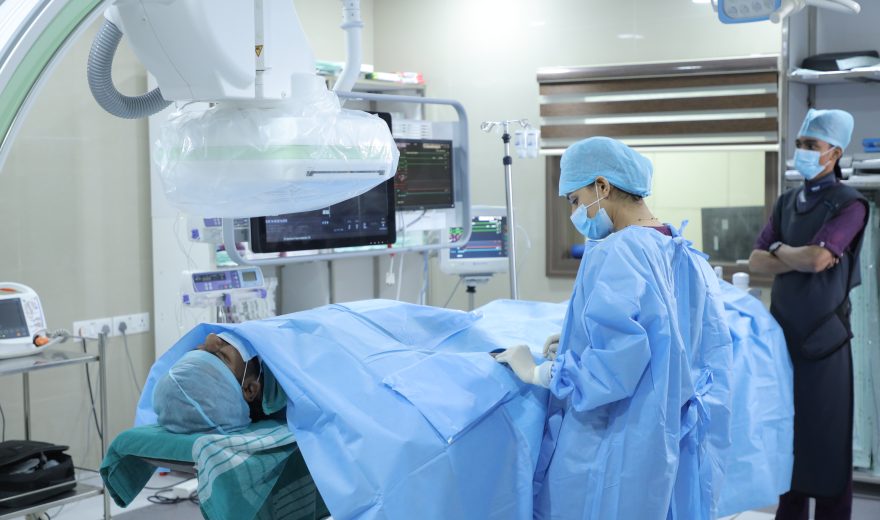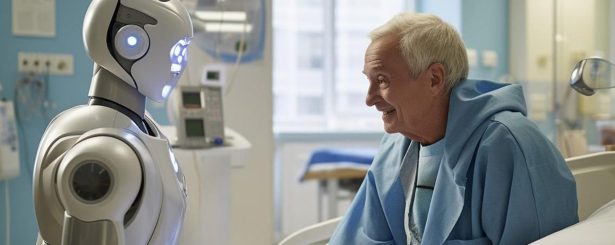Our Facility
AUDIOLOGY & SPEECH THERAPY
Audiology deals with identifying and evaluating hearing disorders associated with adults, children, or infants. The Audiology Department at PIMS offers diagnostic evaluations to people having hearing difficulties.
Audiology combines medical science with the best available technology to develop concrete solutions to hearing or balance disorders. People who practice audiology are called audiologists, and Audiologists are accountable for managing and recuperation disorders linked to hearing and balance. Here audiologists work with speech and language therapists and ENT doctors to provide comprehensive services for people with hearing disorders. The Speech Therapy department assesses, diagnoses and treats children and adults having difficulty with speech, language and swallowing.
Our panel of speech therapists include specialists who have proven excellence and experience in stroke rehabilitation, neuro-rehabilitation, swallowing difficulties and neurological disorders such as Parkinson's disease and voice disorders.
Services and facilities
We are termed as the best speech therapy hospital and deal with all kinds of speech-related problems, including language and voice problems, e.g.
- Stammering/Stuttering
- Childhood Apraxia of Speech (CAS)
- Delayed speech
- Speech Misarticulation
- Cleft lip and palate
- Aphasia
- Dysarthria, Dysphagia
- Hoarse voice due to vocal nodules, vocal paresis
Infrastructure
Audiology & Speech Pathology Services
- Pure Tone Audiogram
- Impedance- Tympanometry - Acoustic Reflex
- Speech Audiometry
- Special Tests- TDT, STAT, SISI, ABLB, MCL, UCL etc.
- Vestibular rehabilitation therapy , tinnitus retraining therapy
- Speech & language Evaluation & Therapy (both adult&children)
- Dysphagia intervention
AUDIOLOGIST AND SPEECH LANGUAGE PATHOLOGIST
Ms.Rinsha Parvin K
B.ASLP
Our Facility
CATHLAB

Cath Lab Services at PIMS Hospital
At PIMS Hospital, our Cardiac Cath Lab is dedicated to providing world-class diagnostic and interventional services for a wide variety of cardiovascular conditions. Led by an expert team of cardiologists and supported by the latest technologies, we offer safe, effective, and personalized care tailored to the unique needs of each patient. Whether you need a routine diagnostic procedure or require a complex intervention, we ensure the best possible outcomes with precision and care.
Coronary Angiogram (CAG)
Our skilled cardiologists perform coronary angiograms with exceptional precision, utilizing both transradial and transfemoral approaches for optimal patient outcomes. This diagnostic procedure allows us to assess the coronary arteries in detail, identifying blockages or narrowing that may be affecting blood flow. Using advanced imaging technology, we can provide clear, accurate information about the state of your coronary arteries, guiding treatment plans such as angioplasty, stent placement, or surgery.
Coronary Angioplasty (PTCA)
Coronary angioplasty is a minimally invasive procedure used to treat blockages in the coronary arteries, restoring blood flow to the heart. During the procedure, a balloon is inflated inside the narrowed artery to widen it, and a stent may be placed to keep the artery open. This treatment helps relieve symptoms like chest pain (angina) and significantly reduces the risk of heart attacks by improving circulation to the heart.
Rotablation (Rotational Atherectomy)
For patients with severely calcified coronary arteries that cannot be treated with traditional angioplasty, rotablation is an effective solution. In this procedure, a diamond-coated rotating burr is used to break up hardened plaque in the arteries. By clearing the blockage, rotablation allows for easier stent placement and restores blood flow. This technique is particularly useful for complex coronary artery disease cases where other treatments might not work.
Peripheral Angiogram (PAG)
A peripheral angiogram is a specialized imaging procedure that evaluates the arteries outside the heart, such as those in the legs, arms, and neck, to diagnose peripheral artery disease (PAD). Using contrast dye and advanced imaging techniques, we can identify blockages or narrowing in the peripheral arteries, providing important insights into the cause of symptoms like leg pain, cramping, and fatigue. This diagnostic test is essential in determining the best course of treatment, including options like peripheral angioplasty or stent placement.
Peripheral Angioplasty (PTA)
Peripheral angioplasty is a minimally invasive procedure used to treat narrowed or blocked arteries in the peripheral vascular system, often in the legs or other extremities. By inflating a balloon within the blocked artery and sometimes placing a stent, this procedure restores blood flow and relieves symptoms such as leg pain, cramping, and reduced mobility. Peripheral angioplasty helps to improve circulation, prevent further complications, and enhance overall quality of life.
Permanent Pacemaker Implantation (PPI)
A permanent pacemaker is a small device implanted under the skin to regulate abnormal heart rhythms, such as bradycardia (slow heart rate) or heart block (delayed electrical signals in the heart). The pacemaker sends electrical impulses to the heart, ensuring it beats at a normal rate. The procedure typically takes 1-2 hours and is performed under local anesthesia. After implantation, patients experience improved heart function, reduced symptoms like dizziness or fatigue, and an enhanced quality of life. This is a long-term solution for heart rhythm problems, allowing patients to return to normal activities.
Temporary Pacemaker Implantation (TPI)
In certain situations, temporary pacemaker implantation is necessary to stabilize a patient’s heart rhythm in an acute or short-term setting. This procedure is often used after a heart attack, during recovery from heart surgery, or when the heart temporarily fails to maintain a normal rhythm. A temporary pacemaker is typically inserted through a vein, with leads placed directly into the heart to regulate the heartbeat. The device is external and used to control the heart’s rhythm until the patient stabilizes or a permanent solution is implemented. Once the heart rhythm normalizes, the temporary pacemaker is removed.
Intravascular Ultrasound (IVUS)
Intravascular Ultrasound (IVUS) is a cutting-edge technology that provides real-time, high-resolution images of blood vessels from within. This tool is used to assess plaque buildup, artery narrowing, and other abnormalities, providing detailed views that help guide complex interventions like angioplasty and stent placement. IVUS ensures that treatments are precise and tailored to the specific needs of the patient, improving the outcomes of coronary and peripheral interventions.
Fractional Flow Reserve (FFR)
Fractional Flow Reserve (FFR) is a diagnostic tool used to assess the functional significance of coronary artery blockages. By measuring pressure differences across a narrowing, FFR helps determine whether the blockage is affecting blood flow and requires treatment. FFR ensures that only the most clinically significant blockages are treated, minimizing unnecessary interventions and optimizing patient outcomes. This approach helps guide decisions for coronary angioplasty or stent placement, ensuring the most effective and efficient care.
Infection Prevention
Preventive Care

Digital Operation
Digital Opration is a technique used for thousands of years to develop awareness of the present moment, It can involve practices to sharpen focus and attention
- Avoid ultra-processed foods
- Don’t eat heavily meats
- Minimize your sugar intake
- Avoid bright lights before sleep
- Drink only safe water
- Avoid harmful use of alcohol
